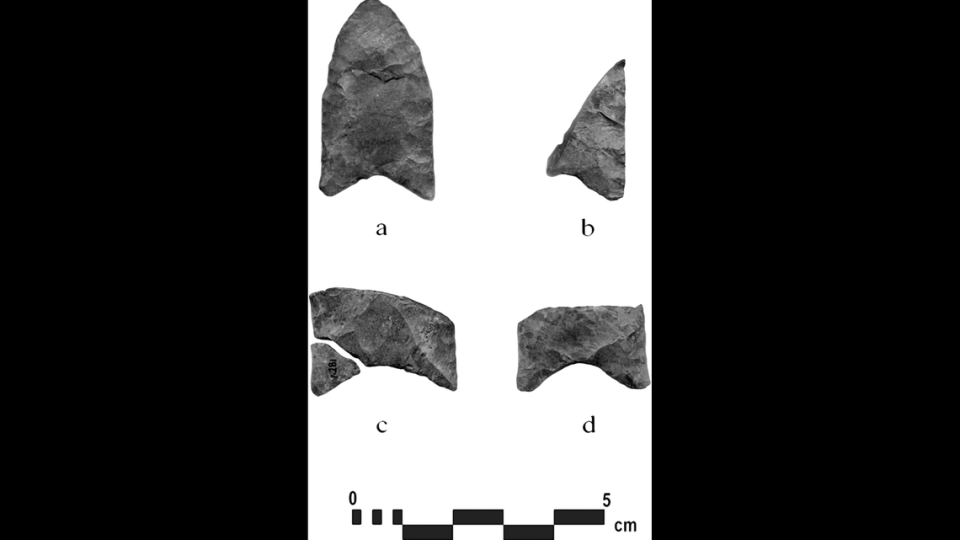Traces of mammoth blood reveal how indigenous North Americans hunted them, study shows
Early indigenous North Americans hunted and butchered mammoths, a new study suggests.
Stone tools unearthed in Ontario, Canada, years ago were recently put through a battery of tests to determine if traces of organic material could be identified, according to research published in the journal of Archaeological Science on Dec. 14.
A single intact biface, a tool sharpened on both sides, was examined in addition to fragments of many other tools, researchers said, adding that they were estimated to be around 11,000 years old.

Researchers studied the prehistoric tools under a microscope to determine the characteristics and locations of various residues, which included “smear-like” organic material and soil sediments.
A scraper and a wedge were among the six tools identified as potential hosts of organic residue, researchers said.
These were then sent to a lab in Oregon for forensic analysis, which involved testing protein residues from the artifacts against the blood serum of known animals, researchers said. Blood from an Asian elephant, deer and horse was used, among other animals.
One tool, a graver – a square-shape shard about 5 centimeters in length – tested positive against the Asian elephant’s blood serum, researchers said.
Given that mammoths and elephants are closely related, the finding suggests, “for the first time,” according to researchers, that early indigenous people might have hunted and butchered mammoths or mastodons, which share a resemblance and are both members of the proboscidean family.
“The theory has been out there a long time that we certainly hunted down mastodons in the past, and then finding this physical evidence of that, it’s an archaeologists’ delight,” Rick Hill, a former advisor to the archaeological site in Ontario, told CBC.
Mammoths, which weighed as much as five cars, first entered North America over 1 million years ago, moving southward from Canada, according to the National Park Service.
The species died out roughly 10,000 years ago at the end of the ice age, according to the park service.
Crocodile heads — buried 4,000 years ago — uncovered in tombs in Egypt, photos show
Angler finds woman’s body under a frozen pond in Rhode Island, officials say
First responder dies when semi slams into ambulance, Wyoming cops say. Another hurt
